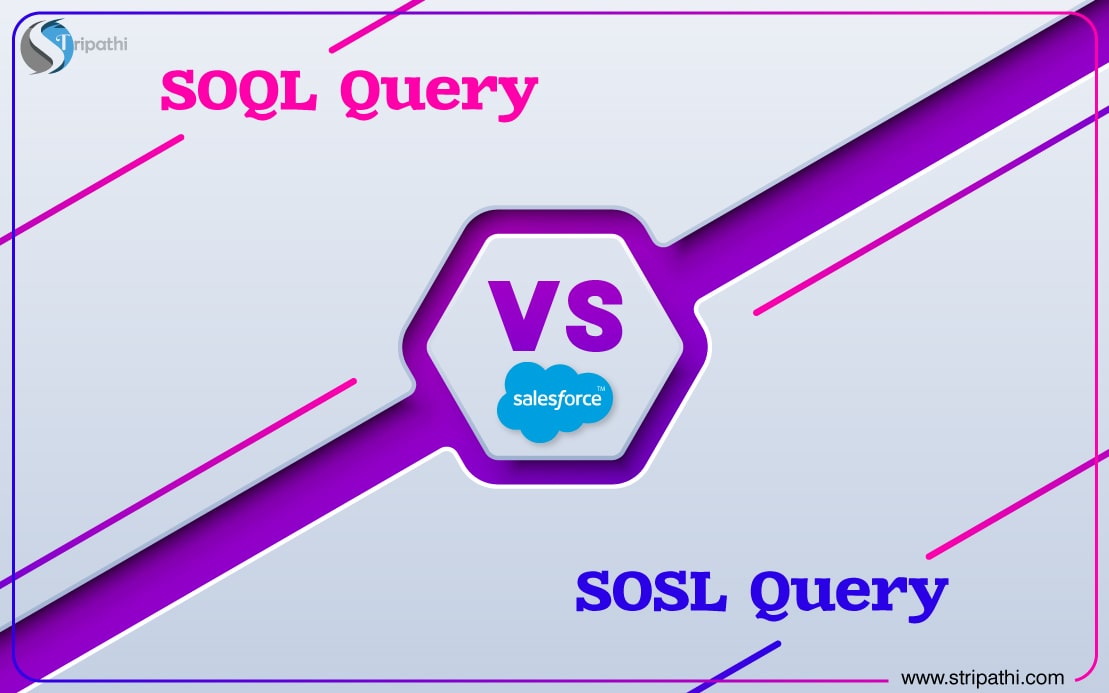Salesforce API offers two highly effective query tools for searching your data within Salesforce: SOQL (Salesforce Object Query Language) and SOSL (Salesforce Object Search Language) that are available in Salesforce’s REST API.
Both SOQL and SOSL are utilized to work with Salesforce data and records. SOQL queries support the “SELECT” operator in SQL together with carrying out a search within the database. SOSL, on the other hand, is basically a programming approach that searches records’ using keyword phrases.
In this blog post, we will guide you on these two powerful query languages of Salesforce, when to use them, and how to take maximum advantage of them.Let’s get started with simple definitions.
What is the SOQL Query in Salesforce?
SOQL refers to Salesforce Object Query Language (SOQL) used to search your organization’s Salesforce data for specific information. SOQL is quite similar to the SELECT statement that is widely used in Structured Query Language (SQL).
What is the SOSL Query in Salesforce?
SOSL stands for Salesforce Object Search Language that provides an ability to search across multiple objects in one query. You can search text, email, and phone fields for multiple objects, including custom objects, that you have access to in a single query in the following environments.
- SOAP or REST calls.
- Apex statements.
- Visualforce controllers and getter methods.
- Schema Explorer of the Eclipse Toolkit.
When to Use SOQL Query?
- Retrieve data from a single object or from multiple objects that are interrelated with each other.
- Count the number of records that meet the specified criteria.
- Sort results as part of the query.
- Retrieve data from number, date, or checkbox fields.
When to Use SOSL Query?
- To retrieve data for a specific duration that you know exists within a field. As SOSL can tokenize multiple terms within a field and build a search index from this, SOSL searches are quicker and can yield more appropriate results.
- To retrieve multiple objects and fields rapidly where the objects might or might not be interrelated with each other.
- To retrieve data for a particular division in an organization using the division’s feature.
SOQL Salesforce Syntax
A SOQL query starts with the SELECT clause and followed by 1 or more optional clauses which include WHERE, GROUP BY, TYPE OF and ORDER BY.
The syntax for SOQL Query:
SELECT <fields>FROM <Object name>WHERE <Conditions>
SELECT: Every SOQL query must start with this keyword. This keyword tells which “fields” from the XYZ Object you are interested in.
FROM: This keyword helps mention which “object” you are interested in.
WHERE: This keyword helps you mention the “condition” of fetching records. i.e, only those records we can fetch that match your business requirement.
Example: SELECT name FROM Account WHERE Name! = “
SOSL Salesforce Syntax
The syntax for SOSL Query:
FIND ‘SearchQuery’ [IN SearchGroup] [RETURNING ObjectsAndFields]
SearchQuery: It is the text to search a single word or a phrase. Search terms can be represented with logical operators (AND, OR) and parentheses.
SearchGroup: This is optional. It defines the scope of the fields to search such as:
- All fields
- Name fields
- Email fields
- Phone fields
ObjectsAndFields: It is the data to be returned in the search result.
Example: Contact(FirstName,LastName,Department)
Limitation of SOQL and SOSL Queries
- Total number of SOQL simulated – 100
- Total number of SOSL simulated – 20
- Total number of records fetched by a single SOSL query – 200
- Total number of records fetched by SOQL queries – 50,000
- Total number of records fetched by Database.getQueryLocator – 10,000
- Total number of queries simulated for Batch Apex and future methods – 200
Conclusion
You can use the SOQL query to fetch records for a single object. With the SOSL query, you can search fields across different objects.
If you are looking for assistance on SOQL Query and/or SOSL Query, trust Cloud Analogy.
